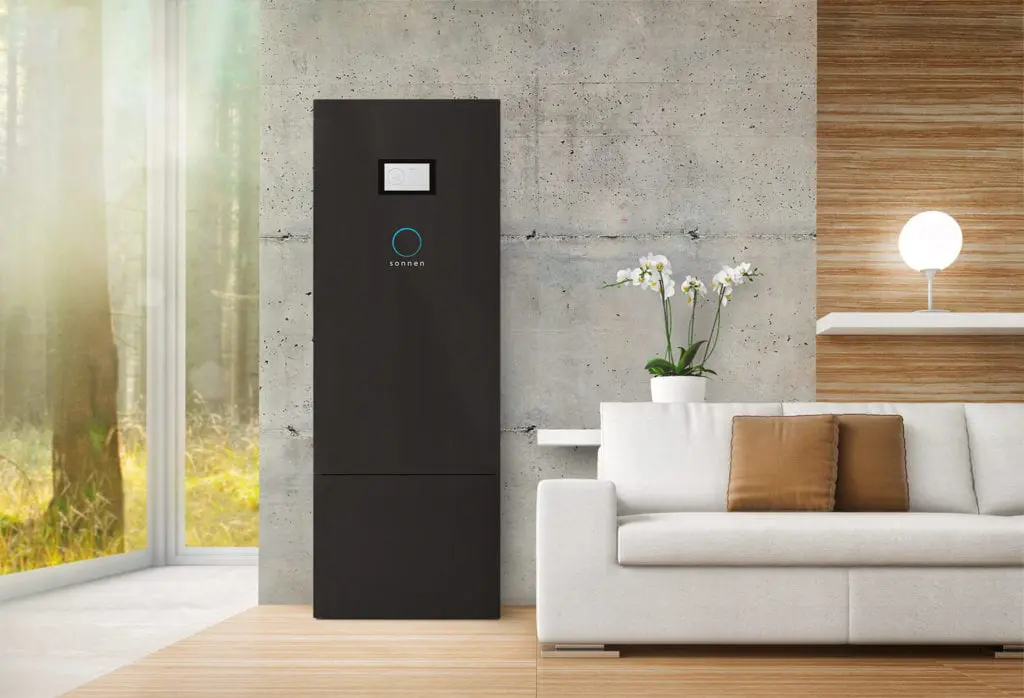Technology innovations are making solar power more attainable for new homeowners

A big downside of solar power is that it doesn’t work when the sun isn’t shining—at night, for instance, when the typical family uses most of their daily power. The vast majority of residential solar systems get grid-tied because the home sells power to the electric utility during the day and buys power from it at night. The homeowners pay the difference between the sold and purchased power, an arrangement called “net metering.”
This system has a couple of big flaws. One is that grid-tied systems have traditionally lacked storage, so if there was an outage the home was left in the dark at night, solar panels or not.
Net metering is inefficient for the utility, too. It has to find ways to use the power it gets from residential solar systems during the day when it’s least needed, then it has to generate power to sell back to those homes at dinner time when demand is highest. There’s too much power in midday and not enough in the evening.
This inefficiency is worst in states with lots of sunshine and high demand for air conditioning. That led Arizona utilities to stop qualifying new solar systems for net metering in 2016.
Here’s more about what is happening in the solar power technology space that is making a difference for new homeowners:
Tech to the Rescue
Help has arrived in the form of home batteries. They use the latest Lithium-Ion and Nickel Magnesium Cobalt technology, sold by companies that include LG, Panasonic, Samsung, Sonnen and Tesla.
Demand has been healthy. Brett Simon, a Senior Analyst at Greentech Media Research, estimates U.S. residential battery sales grew five-fold from 2017 to 2018. While that growth might be news to people outside of California and Hawaii, which account for most of those sales, a market has emerged in the rest of the country.
Homeowners like batteries because they charge during the day with free power from rooftop solar panels. In areas where the utility charges higher rates during peak usage the home can switch to battery power during those hours.
In 2018 Unity Homes, a panelized homebuilder in Walpole New Hampshire built a three-bedroom home in nearby Guilford, Vermont, with a 10 kW solar system and a Tesla Powerwall 2 battery, the first in the company’s history. Unity Homes founder Tedd Benson says that the battery provides 8 to 12 hours of backup power if a winter storm knocks down the power lines, something people in rural New England worry about.
A single battery will power a few lights, a refrigerator, a freezer and a handful of outlets for the computer and the phone charger. It won’t power a heat pump, so homeowners in a heating climate may want a gas furnace or fireplace as backup.
Benson points out that for the battery to provide backup power the home needs to be wired for it. In a new home this is a simple matter of having the electrician include a sub-panel with the circuits the battery will serve during an outage.
Load Management
Batteries also solve problems for the utility. Green Mountain Power actually subsidized the battery in the Guildford home, lowering the homeowner’s cost from $7000 to $1500. Green Mountain Power Communications Director Kristin Kelly says that the utility’s goal is to subsidize thousands of home batteries in the state to create what she calls “a distributed grid” that it can draw from during times of peak demand.
Utilities are also getting on board in California, with Pacific Gas and Electric making batteries available for that same $1500 cost.
The PG&E subsidy led Bakersfield builder Dave Packer to install a Tesla Powerwall 2 in his most recent model home, which also included rooftop solar. “The home uses the stored power in late afternoon and early evening when rates triple,” he says. The battery can also supply backup power.
The economics are similar in San Diego, where peak rates can be 32 cents per kWh more than the rest of the day. “Using the battery for the four peak hours will definitely save you money,” says Michelle Mapel, Senior Director of Sales and Marketing at Sonnen.
Even Arizona is getting in on the action. Mandalay Homes is including solar panels and Sonnen batteries in a 2900-home development in Prescott Valley. Although there’s no net metering, Arizona Public Service has come up with other incentives.
“They’ve taken a carrot and stick approach,” says Geoff Ferrell, Mandalay’s Chief Technology Officer. If homeowners supply their own power from 3pm to 8pm every day, the utility charges them a flat rate of 4.5 cents per kilowatt-hour for all purchased power. Otherwise they pay 12 to 13 cents for most of the day, plus a higher peak rate from 3 to 8.
Mandalay pays full price for the batteries, which adds $20 to $25 per month to the mortgage payment, but the panels supply 80 percent of the home’s power, according to Ferrell. That, along with the lower electric rate, means a $75 to $80 a month reduction in the typical monthly electric bill.
When There’s No Incentive
While batteries offer clear economic benefits in areas with high peak rates and some sort of incentive, the cost of installing the battery is less attractive to homeowners with neither.
Sean Buckley is Owner of Harvest Sun Solar, a solar installer on Martha’s Vineyard, MA. Although the island is prone to power outages from hurricanes as well as winter storms, it has a fixed electric rate with no subsidy. “Batteries [are a] hard sell,” he says. “Only about 10% of my solar customers take that option.”
Incentive or not, some builders think a battery still makes sense in a super energy efficient, solar-powered home. One of these is Thrive Homebuilders in Denver, which makes batteries standard in its single-family homes, despite having to pay full price and the area’s lack of peak rate pricing.
Thrive CEO Gene Myers says that the homeowners still save because all their homes meet the standards of the Department of Energy’s Zero Energy Ready program which requires that the home can supply as much power as it uses.
There haven’t been any complaints. “Zero Energy is part of our brand,” says Myers, although he admits that the cost of the battery is less of an issue on the company’s $500,000 plus homes than it would be in more affordable units.
More high-performance production builders like Mandalay and Thrive will likely make batteries standard in the future, but in most cases the decision likely remains up to the homeowner. Given the benefits, chances are a growing number will choose this option.

Charlie Wardell is a licensed builder and a writer and editor with more than 20 years of experience covering home building and construction.
A Massachusetts resident, his work has appeared in some of the nation’s leading media brands in print and online.
In addition to his exclusive articles for NewHomeSource, Charlie has written or edited for publications that include Architectural Record, Custom Builder, Fine Homebuilding, Green Builder, Harvard Management Update, Popular Science and This Old House.
 What You Need To Know About Condo Insurance
What You Need To Know About Condo Insurance